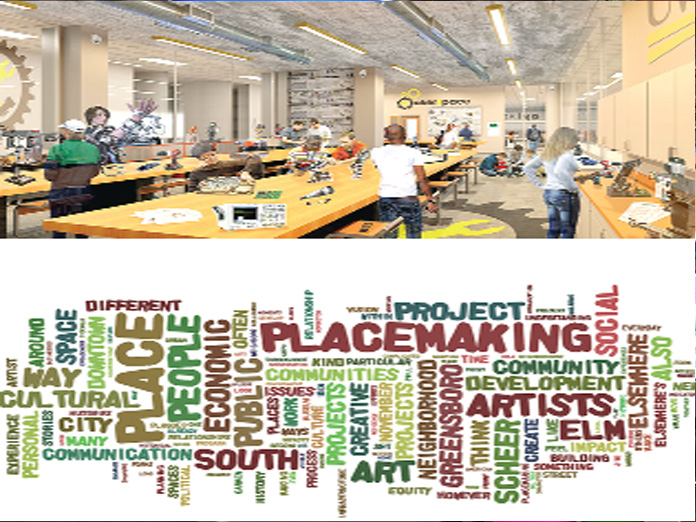Can placemaking create jobs?

The topic of jobs is perhaps the most discussed today at conferences , by political leaders , in meetings and around dinner tables Job crisis experienced by most countries around the world is triggering these discussions In fact the survey results published yesterday on the Mood of the FirstTime Voter , show that nearly 70 per cent of males demand jobs from next government
The topic of jobs is perhaps the most discussed today – at conferences , by political leaders , in meetings and around dinner tables. Job crisis experienced by most countries around the world is triggering these discussions. In fact the survey results published yesterday on the Mood of the First-Time Voter , show that nearly 70 per cent of males demand jobs from next government !
In India , it is the demographic shift that has resulted in almost 17 million new entrants into the workforce year on year. This shift is visible but shifts in the economic and societal profiles like rapid urbanisation, increased individualism, shifting roles within families, rising consumerism and spending patterns are less visible and so far have not been understood in their entirety for the purpose of creating jobs .
For sometime now India’s job landscape has been in a transition with a slowdown in employment in core sectors and the emergence of new engines of job creation - a transition from white collar / blue collar jobs to ‘no collar' jobs that are mainly entrepreneurial in nature. These new self-employment models and emerging technology aggregator models are to some extent transforming the jobs landscape of the country.
While there are predictions that Industrial revolution 4.0 and emerging technologies like IoT, Big data, Cloud computing, Robotics, Automation, etc. might change the very landscape of jobs ,that may not be the case in India .
According to FICCI, NASSCOM & EY reports on “Future of Jobs”, approximately 9 per cent of workforce would be deployed in new jobs that do not exist today, 37 per cent would be engaged in jobs that have radically changed skill sets and 54 per cent will fall under unchanged job category.
Given the findings, India should prepare its people for the 9 per cent new age jobs and retrain for 37 per cent jobs with different skill sets. In this context, it’s important to look at opportunities that are not present in the ‘traditional jobs stack’ . Let me give a glimpse of one such opportunity.
In the year 2014 , as an international jury member , I voted for Hsinchu City in Taiwan as a Smart Community.
The city walked away as one of the finalists at an awards ceremony in New York that year. Under Mayor Hsu Ming-Tsai, the city’s challenge was to make Hsinchu City a sustainable Intelligent Community with a high quality of life, where innovation is a part of people’s daily lives.
Though the city provided 4G wireless to 97 per cent of the population, made digital education mainstream, put a smart card into the hands of 120,000 residents, the city was unanimously rated high for an innovation involving its community and its people. What impressed us jurors was the way in which the Mayor infused economic vitality into the city by using 'open places' to revive an ancient art.
Glass making, was the city’s main stay for several decades before it was forgotten by people of Hsinchu. The mayor realised that infusing economic vitality into the city is not only about job creation but is also about civic bonding and sustainability. Having researched on the ‘glass making' art that existed decades ago he chose to revive it by introducing Glass ART classes in open spaces of the town.
What started as a hobby soon became a profession for many. As people took to glass making seriously, venture capitalists saw the opportunity and started funding entrepreneurs . Glass making business grew much with fund infusion and the city soon turned into a glass making hub . While the city flourished economically , innovation on ‘glass as a material’ led to producing quadruple glazed glass – the most eco-friendly glass in the world ! The mayors model is quite replicable in India . Its about using ‘ open places’ and bringing ‘innovators ‘ together .
Under the Smart Cities Mission of Government of India, many cities have made ‘Place Making' one of the projects in their bouquet. The concept of ‘Place Making' is where open / underutilized public places are put to good use - It capitalises on a local community's assets, inspiration, and potential, with the intention of creating public spaces that promote people's health, happiness and well being. Cities like Surat, Pune and Bhopal along with many Mission cities have invested in place making projects .
But to mimic Hsinchu model we need innovators. Let me introduce the ‘ Maker Space’ concept here. A 'Maker Space' is a collaborative work space inside a school or separate public/private facility for making, learning, exploring and sharing that uses high tech to no tech tools.
These spaces are open to kids, adults, and entrepreneurs and have a variety of maker equipment including 3D printers, laser cutters, machines, soldering irons and even sewing machines. In India , the Department of Science and Technology, has embarked on the journey to create a favorable environment at the university level to kindle the maker spirit, and ensure young students find innovative solutions to local problems specific to the Indian sub-continent.
Indian cities should combine the concepts of Place Making and maker spaces for Job creation. Its not only the new age technologies like 3D printing , AI , Robotics that excite people in cities but many crafts of yore. Be it the Exotic Marble Stone-Craft of Agra, Madhubani of Bihar, Puppets of Rajasthan, mirror work of Bhuj, wax metal casting of Bastar, Bamboo Crafts of Assam, Rosewood Inlay of Karnataka, exotic silver Filigree of Telangana all of them can be taught in open places of cities .
A larger parcel of land in the city can be converted into market places for these products on the lines of Shilpgram of Udaipur or Shilparamam of Hyderabad. Placemaking is a great opportunity where even as some dying crafts get revived, economic vitality can be infused.
In the recent years, the urbanisation wave in India has increased spending by nearly 14 per cent a year. This pattern will demand certain new products / services and new businesses / business models. In this context if a small percentage of open places in cities are used for activities such as these imagine the impact it will have on revival of ancient crafts, opportunity to innovate , engage community at large in economic activity.
Take Hyderabad for instance, according to revenue records, there are 131 parcels of litigation-free, vacant government land spread over 60 acres in Hyderabad itself. Compound walls were constructed at 68 locations (24 in Hyderabad and 44 in Secunderabad). Apparently , the remaining 63 land parcels could not be protected with compound walls due to fund crunch ! A classic case of why these lands should be used for Place Making !
And as for those with doubts on how ancient craft will survive the age of Industry 4.0 , years ago digital news was perceived to be a threat to its counterparts in print. But decades later not withstanding the digital revolution ,you are still reading this in print aren't you?
(Writer is President, Futuristic Cities, Global Thought Leader, Advisor on Smart Cities, Governance & Policy)

















